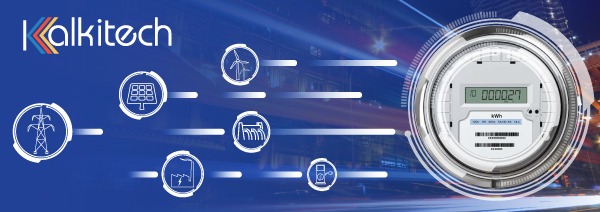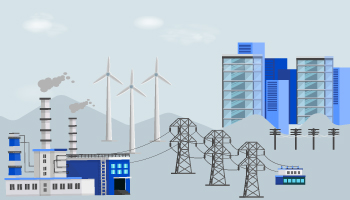Network Interface Card Requirements for VPR
Shwetha Bhat January 22, 2025
Shwetha Bhat January 22, 2025
Virtualized Protection Relaying is an innovative concept in Substation automation and Control. The basic idea is to decouple the protection algorithms from the relay hardware and deploy them in a software-defined environment. This is expected to make tremendous changes in the way substations are operated and maintained as evident from the below image
Figure 1 Virtualization can reduce the complexity of a substation control room
It is possible that multiple instances of such virtualized protection algorithms can be deployed in separate containers/virtual machines hosted on the same physical server machine. Sampled value stream published by various Merging units in the field act as the primary input for most of these virtualized functions. IEC 61850 based process bus plays an important role in delivering the process inputs to individual protection functions.
Figure 2 Process bus network serving all the field data to the VPR server.
How do we implement a system in which the process signals available in the process bus are delivered simultaneously to different applications running in multiple virtual machines? There are numerous ways to achieve this.
This is the most straightforward approach in virtualization, where we reserve a particular physical port to a virtual machine(VM). In this configuration, a selected physical network port will be visible only to a VM instance. Applications running in this VM can use this port exclusively. In this configuration, we must consider a system with multiple physical ports, and the network architecture can become complex.
A virtual switch is a software program that emulates a switch which is a layer-2 network device. Virtual switches are used to ensure connections between virtual machines and connect virtual and physical networks. A virtual switch uses a physical network adapter (also called NIC – Network Interface Controller) of the host computer for connection to the physical network.
Virtual switches from Broadcom (VMWare) are known as vSwitches whereas virtual switches from KVM are known as KVM bridge or KVM network bridge.
Figure 3 VMWare ESXi with vSwitch mechanism.
The single root I/O virtualization (SR-IOV) interface is an extension to the PCI Express (PCIe) specification. SR-IOV allows a device, such as a network adapter, to separate access to its resources among various PCIe hardware functions. SR-IOV extends the concept of virtualized functions down to the physical NIC. The single physical card is divided into partitions per physical NIC port that correspond to the virtual functions running at the higher layers. An SR-IOV-enabled NIC is a standard Ethernet port that provides the same physical bit-by-bit function of any network card.
Figure 4 SRIOV based NIC
Compared to direct pass-through option, the other options (SRIOV & vSwitch) offer excellent resource sharing between multiple VMs. However, there are a few points to be considered while selecting the network architecture.
PRP/HSR has been a standard requirement in modern substations. We need to ensure that the necessary support is available in the selected internal networking mode. The selection of the right networking approach depends on the capability of the physical NIC that is being used in the server.
In case the NIC supports the handling of HSR/PRP redundancy, the virtual network switch need not distribute the redundant pair of packets coming from the network. The VMs and the applications running in the VM receive the redundancy resolved packets as the redundancy handling takes place in the NIC itself.
In case the NIC does not support redundancy handling on board, the redundant set of packets need to be forwarded to the VM(s). It shall be the responsibility of the drivers running the VM to resolve the redundancy.
It is a mandatory requirement that accurate time synchronization options are available to ensure all the devices are synchronized to a high precision clock. This requirement extends to virtual machines as well. The virtualization solution shall ensure that all the VMs are synchronized to a grand master via IEEE1588. Selection of the networking architecture is important.
One of the standard approaches is to have a dedicated VM to handle the time synchronization. The time synch packets need to be delivered to other VMs. This can be achieved by configuring a dedicated NIC for the selected VM that handles the time synchronization. This NIC need not be included in the virtual switch and can be a direct pass-through connection. It shall be the responsibility of the time synch VM to ensure all other VMs are synched to the same time source with necessary degree of accuracy.
This article tries to list out the standard networking options within the virtual machines We need to ensure that we consider support for essential features listed above when choosing the VPR system architecture, hardware components, and virtualization application.

June 12, 2025
The DLMS Server SCL has been enhanced with several feature additions aimed at empowering meter manufacturers and OEMs with new capabilities, improved interoperability, and enhanced security. The following are the key customer benefits as well as the significance of these additions: Key Customer Benefits…
Know More
April 10, 2025
We are proud to announce that Kalkitech's Kalki.io platform has successfully completed the System and Organization Controls (SOC) 2 Type II examination. This significant achievement highlights our deep commitment to…
Know More
April 9, 2025
Residential Use Cases: Smart Homes: Homeowners can use IEEE 2030.5 to integrate smart home systems such as solar panels, smart meters, and electric vehicle chargers. This allows for dynamic energy…
Know More